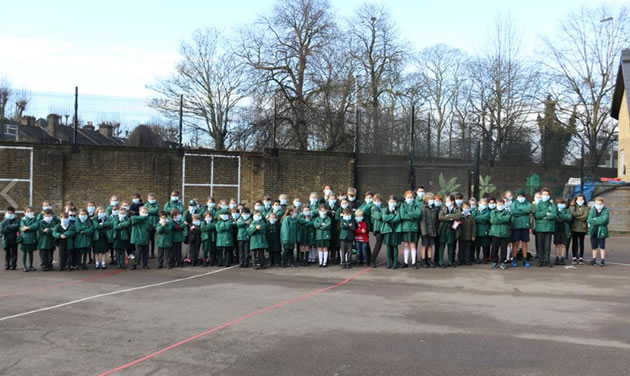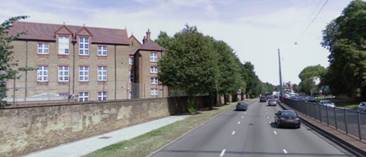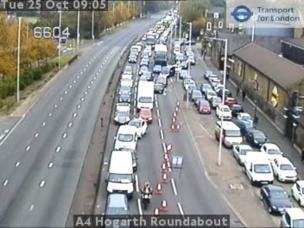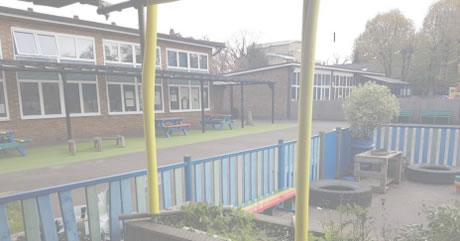Creating A Green Oasis For Toxic Air School Playground
Parents at local schools want to create a community haven in pollution 'hot spot'

A Green Wall, to tackle air pollution from busy roads
Parents from St. Mary’s Primary School, Chiswick who have been
campaigning against air pollution near the school, have started a new
non-profit campaign called the 'Chiswick
Oasis'
The plan is to redevelop the old playground between the St Mary's Primary
and the William Hogarth primary schools, both of which were included in
a list of the 50 most polluted schools in London.
A report from The Mayor’s office, indicated the school is situated in one of London’s worst pollution hot-spots.
The parents want to create a new green space with a living wall along its perimeter right next to the polluted 6-lanes A4.
They say; "This new green space will eventually be open to the public on weekends and bank/public holidays, and it will become a new site in Chiswick, ideal for hosting farmer/book/flee markets and other social/family/sporting events."
"It is a project that hopefully will not only support local businesses but also (and especially) help tackling the huge problem of air pollution and it will help provide cleaner air to the 800+ children and staff of the two primaries as well as those who use the Piccolo Childcare Centre right next door each day - and of course the local residents in Chiswick." said Andrea Carnevali from the St. Mary’s Air Pollution Group
 Children wear face masks to demonstrate their opposition to breathing
polluted air
Children wear face masks to demonstrate their opposition to breathing
polluted air
They are hoping for the promised funding from the Mayor's Crowdfund project, as well as local donations, and have 86 days to reach their target. The Mayor's team will be assessing campaigns the week commencing Monday 8 October. While they are not expecting 500 pledges and 40% of the target, they must have demonstrated that there is support for this project if they want to get funded by the Mayor.
"We’re also talking to the charity Trees for Cities to create an edible playground and we’re looking into air purifiers to install inside each classroom. We’ve currently just installed one as a trial for a month and we are monitoring its results, before giving the go-ahead and installing all the others."
They are also looking at ways to campaigning to include the stretch of the A4 next to the schools in the proposed ULEZ.
Local MP, Ruth Cadbury, has been a vocal endorser of the project for the past few months and so have local councillors, Ron Mushiso, John Todd, Ranjit Gill, Joanna Biddolph.
"We are so pleased that both side, Labour and Conservatives are united in this, as it should be. Our children’s health should not be a political issue.
Air pollution levels surveys carried out around William Hogarth School and Cavendish Primary, as well as St Mary's found that all three were experiencing high levels of pollution, mainly due to the proximity of busy main roads. In the case of St Mary's approximately 47,300 vehicles per day travel on the core roads within a 200m radius of the school, which the report said was is within the upper quartile for traffic volumes amongst the 50 schools assessed as part of the programme.

The consultant's audit of fifty selected London schools, including the three primary schools in Chiswick, ( as well as Ealing and Hammersmith, and central London ) was set up by the Mayor, Sadiq Khan last year to tackle the problem of polluted air in school grounds situated near busy roads. A £1 million fund has been announced which will provide each of the 50 audited schools with a £10,000 starter grant and enable any of the other London schools located in areas exceeding legal air pollution limits to apply for green infrastructure funding.
However, there are fears that when the amount is divided between all schools, it will not be enough to make a substantial impact. Hence the need for the school to do as much work as possible to raise funds.

Consultants WSP, who carried out the audit, have made recommendations to reduce emissions and exposure. They include:
-moving school entrances and play areas away from busy roads
-'no engine idling' schemes to reduce emissions from the school run
-reducing emissions from boilers, kitchens and other sources
-local road changes including better road layouts, restricting the most
polluting vehicles around schools and pedestrianisation by school entrances
-adding green infrastructure like ‘barrier bushes’ along busy
roads and in playgrounds to help filter fumes
-encouraging students to walk and cycle to school along less polluted
routes.

September 21, 2018